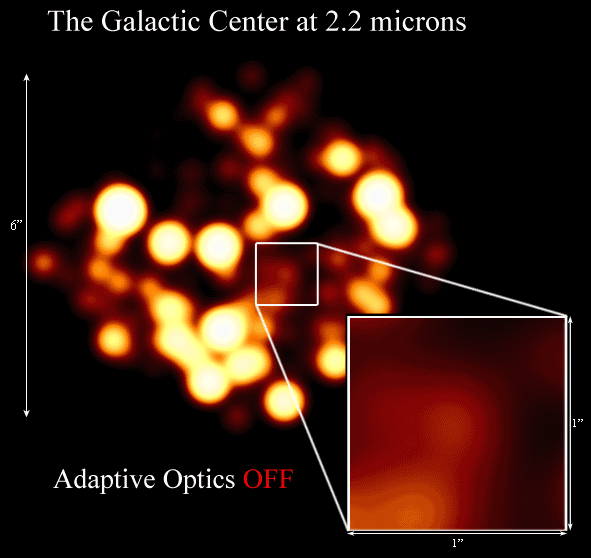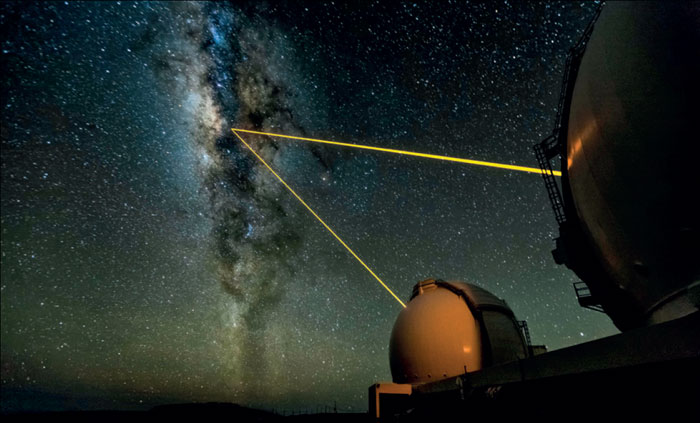
What is Adaptive Optics?
A telescope's effectiveness depends both on the collecting area and the angular resolution (θ). The anglular resolution is measured by θ ∝ λ / D, where λ is the wavelength and D is the diameter of the aperture of the telescope. Theoretically, the angular resolution improves with increased diameter; however, it is limited by distortions in of the light (the wavefront) that travels through our atmosphere, which puts contraints on the telescope's diffraction limit.
Layers and local patches in our atmosphere varies greatly in density, temperature, turbulence, and size which in turn leads to constant changes in the refractive index n. Therefore a wavefront arriving to our atmosphere from an object in space will diffract numerous times as it travels through the different atmospheric layers, before reaching the telescope, resulting in blurred images.
Adaptive Optics (AO) is a technology that corrects for the changing refractive indices, enabling the telescope to reach its diffraction limit. By using a fixed light source in the sky, real or artificial, the distortions in the wavefront can be measured, which the telescope's deformable mirror make almost continiously corrections for. Using a real astronomical object for the corrections limits the observing astronomer to near by areas in the sky. An artificial light source is induced by lasers from the telescope itself that points to the sky, which can be directed where the astronomer desires.

Text sources: Wizinowich et al, 2000, PASP 112;
Wizinowich et al, 2006, PASP 118;
Beckers, J. M., 1993, Annu. Rev. Astron.
Astrophys. 31
Adaptive Optics At W. M. Keck Observatory
The W. M. Keck Observatory has been equipped with Adaptive Optics since year 2000, and Prof. Ghez and the Galactic Center Team was the first make use of it. Because of the AO and the enhanced resolution, they've been able to measure the orbits of the objects in the central 1parsec of the Galactic Center, and determine that a supermassive black hole resides there.